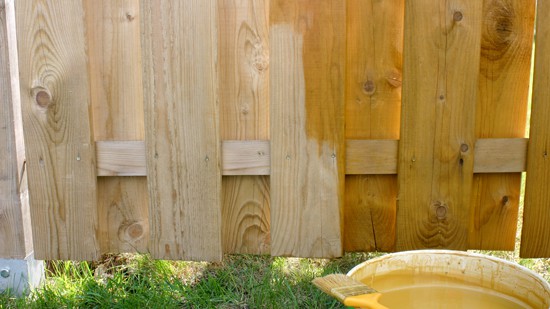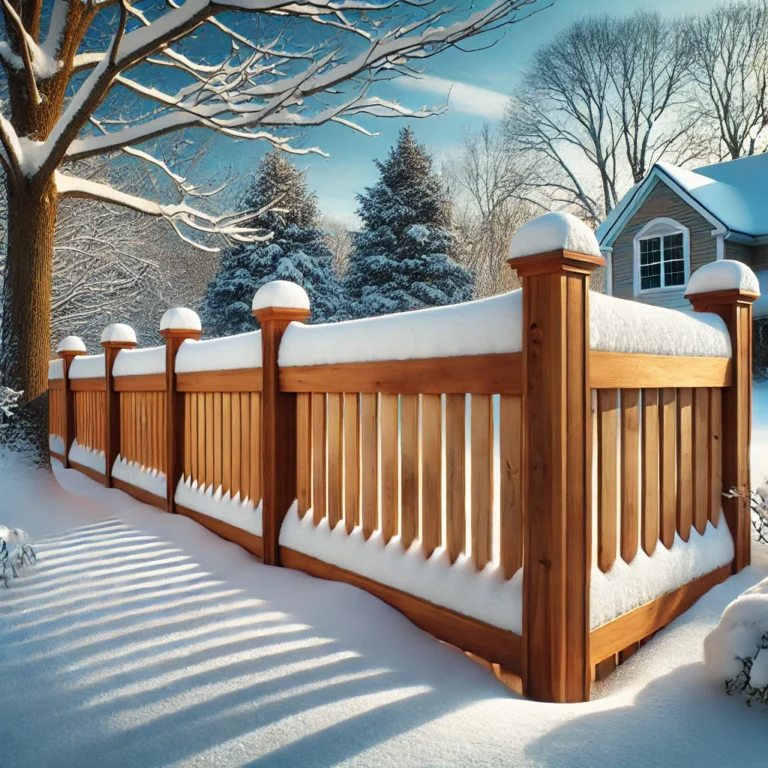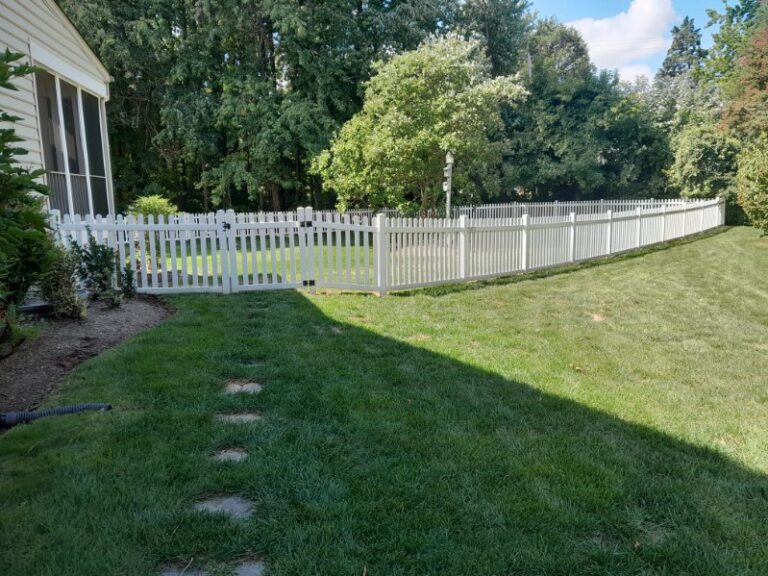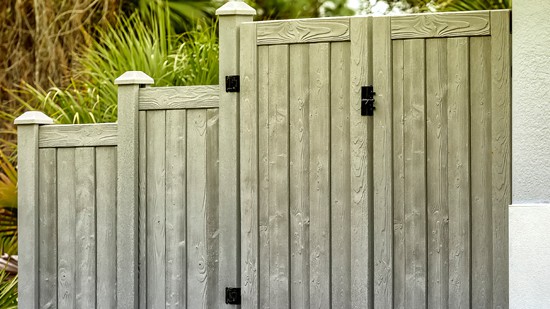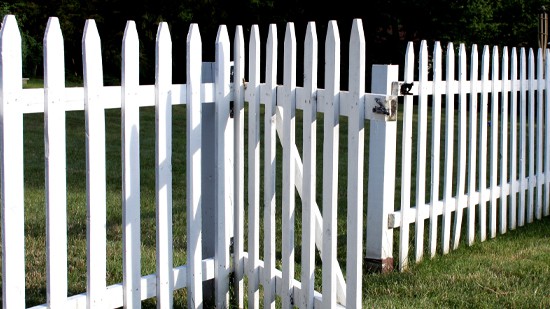If you have a wood fence, you need to preserve it every few years with some form of treatment. The wood slowly loses its natural oils, making it more susceptible to pests and rot. You can slow this process with wood fence treatment, and you can bring out the beauty of your wood fence. Here we will compare fence staining vs. painting to find the best treatment for your needs.
Pros of Fence Staining
Fence staining maintains the natural look of your wood. You can still see the grain coming through, even if you choose a darker stain than the wood’s natural color. This is a beautiful look that complements just about every home style. Wood stains are available in many different shades, so you can customize the look to fit your aesthetic.
Fence stain looks better for longer because the faded areas are not as noticeable as they are with paint. The stain does not peel or crack over time. If you have other wood elements around your home, you can stain them to coordinate with your fencing. This creates a cohesive look that’s sure to wow all your neighbors.
Cons of Fence Staining
Fence staining is not a one-and-done ordeal. Of course, neither is fence painting. You have to repeat both processes every few years for best results. We recommend re-applying stain every 3-5 years as part of your wood fence maintenance.
Fence stain can be pricey, especially if you have highly absorbent wood. You may need several coats of stain for each application to achieve the desired look. If your fencing has already greyed quite a bit, it may not hold the stain the same as a fairly new fence would. You can do a test run in an inconspicuous area before staining the entire fence. Then you can decide if you’d like a different stain color, or if the project is going to require more stain than initially expected.
Pros of Fence Painting
Fence painting is the most versatile wood fence treatment in terms of color options. You can paint your fence white, black, green, magenta – whatever your heart desires. If you don’t like the look of natural wood, this is a great way to cover up the wood grain and create a smooth finish throughout. This is one of the biggest reasons some homeowners choose paint over stain.
Fences are not subject to the same foot traffic a deck or patio would be. Thus the paint remains more durable on fences and may last just as long as stain would. Paint dries much faster than stain does, so it can be applied quickly, even before a rainstorm. This makes paint a good option in persistently wet climates when the timing for fence staining is hard to coordinate.
Cons of Fence Painting
Painting a fence definitely has its drawbacks. For starters, it usually costs much more to paint a fence than it does to stain a fence. This is because the fence has to be well primed before applying the paint, and heavy-duty primer is expensive. Paint is also less forgiving than stain. Mistakes in application are easy to notice, and they could detract from the finished look of the fence.
Another matter to keep in mind is how paint looks as it ages. The paint may crack, peel or bubble as time goes on. Worn stain will just fade away, but paint will look choppy and disheveled. This may cause you to repaint more frequently because you’re not satisfied with the appearance.
What’s the Best Way to Treat a Wood Fence?
Overall, fence staining is considered the best wood fence treatment. It is durable, beautiful, more affordable, and more forgiving. Nevertheless, fence painting is still a great option, especially if you want a custom color for your fencing.
The experts here at All Around Fence can help you decide which wood fence treatment, staining vs. painting, is right for you. Contact us at (443) 838-9374 to schedule a consultation with a fence contractor near you.

